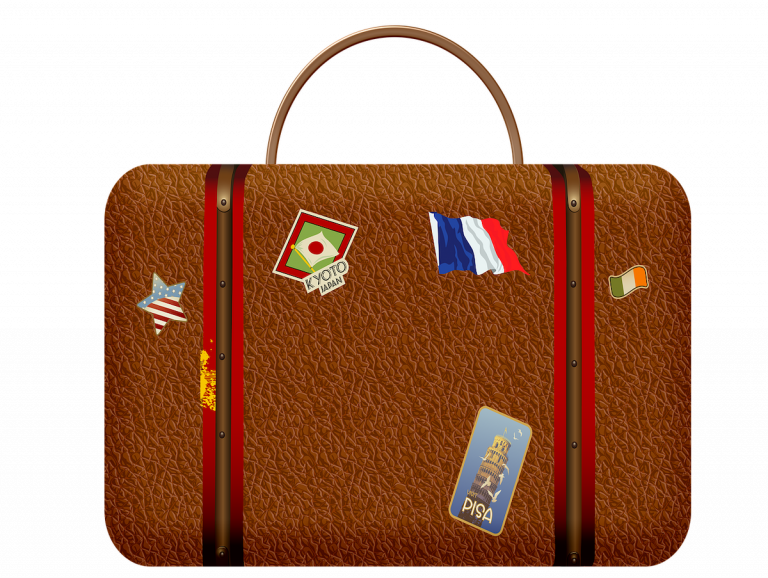A Matter of Time: 7 Ways Guided Tours Will Change

When any traveler arrives at a new-to-them destination, they’re eager to explore and discover. But they are usually limited to hours, days or weeks at a destination they’ve long dreamed of visiting—making the time too short to see and do everything. Many don’t even have (or devote) sufficient time or energy to adequately research and plan a trip before they go.
But creating time-efficient itineraries is just one of many the reasons why guided tours have become so popular. Tour guides not only know their respective geographical domains but can share an insider’s perspective on local history, customs, culture and color that isn’t otherwise accessible to visitors. They can answer questions travelers might be hesitant to ask total strangers.

Yes, there are naysayers who paint all guided tours with one brush. They criticize them as formulaic, tending to take people to tourist traps, and eliminating the joy of serendipity.
I wouldn’t disagree—that happens, sometimes. Most of us have probably been “stuck” on a disappointing guided tour at one time or another. Perhaps, the guide carrying a lollipop, was a low talker, fast walker or had interests that ran 180 degrees antithetical to your own. Or the group had so many people asking irrelevant questions or took so much time getting on and off a bus that little time was left to explore.
But when guided tours are good, they are not only enjoyable but invaluable. This tends to occur when the guide is someone who is immersed in local culture, the tour group is small, and the tour is personalized.
On YouTube: Our tour guide, Eskerne Falcon of Discover San Sebastian shows us how to pour txakoli, the local white wine.
We recollect visiting Paris with an Indian tour guide who emigrated, married there and raised a family. As we toured the city with her, she was able to describe aspects of French life and culture that would have otherwise been unnoticed. The culinary tour guide that took us through Porto introduced us to a small, historic dairy shop filled with locals that may have had the best eclairs in the world. And the guide who took us on a safari in Kenya was able to spot wildlife in the bush that we would have never seen.
Changes on the horizon
The sheer number and variety of tours and tour guides has grown exponentially over the past decade, another outgrowth of the same sharing economy that led to Airbnb and Uber: Internet technology has made it easy for consumers to connect directly with guides all over the world via a wide number of travel platforms. Writing for industry analyst PhocusWright, Peter Syme estimates the tours, activities and attractions sector alone of the overall travel industry at some $254 billion.
Separating good guided tours from bad

I recently wrote an article for Forbes on the topic of guided tours and interviewed several tour operators to find out what changes might be expected when we start traveling again—after restrictions ease. Each of them stressed that health and safety will be foremost on the minds of travelers—whether they’re on planes or trains, at hotels or villas, or on tours. And it will be the same for tour guides and tour operators.
Here are some of the changes they predict in the tour industry:
1 – More private tours
Tourists will want to limit any unnecessary, up-close exposure to strangers. Therefore, they’ll opt for smaller, more private tours often with family or trusted friends rather than with larger groups. One silver lining: This will allow for more personalization.
2 – Visiting less dense places

Travelers will be more likely to visit lower-density destinations (for example, Emilia Romagna rather than Rome or Florence, and Provence rather than Paris.) They won’t want to mingle with the masses. Instead of city tours, they’ll seek out tours in the countryside and other surrounding areas.
3 – Rethinking transportation
Rather than using tour buses or public transportation, travelers will opt for tours that allow them to walk, hike or bike. When they want to tour in vehicles, they’ll opt for pre-sanitized cars or small vans rather than buses, along with more empty seats and distance between passengers, drivers and guides.
4 – Emphasis on the outdoors

More tours are likely to be conducted al fresco, when possible. For example, culinary tours are likely to move from small restaurants and crowded markets to outdoor patio settings and parks.
5 – More virtual attractions
Before the pandemic, many tours offered intimate experiences. For example, crowding in a kitchen to watch a chef prepare a local dish on a shore excursion or a food tour. Now the experience may be streamed on a monitor and shown in a socially-distanced space.
6 – Increased attention to health and cleanliness
Travelers will want to know that everything has been cleaned and sanitized e.g. vehicles, restrooms, etc.). Interactions with tour guides will likely be touchless and contactless (payment, tips, maps, etc.). Both guides and tourists will be required to wear masks. Tour guides will offer hand wipes or sanitizers.
Some tours may require temperature checks or attestations from travelers that they are COVID-free.
7 – Need for flexibility
The travel landscape is fluid as we learn more about the coronavirus and the risks of infection (and reinfection). Local rules and requirements as well as hours and openings of attractions are changing on the dime. Thus, both tour guides and tourists will need to be willing to continually adapt to changes that protect their health and safety. More than ever, they’ll have to depend on tour guides to know which public restrooms are accessible and clean.
Many travelers were burned by the sudden and unexpected pause in travel, fighting for and sometimes losing deposits for expensive flights, cruises and tours. Because the future of the travel landscape is still so uncertain, travelers will expect vendors to offer liberal cancellation policies so they don’t pay in advance or don’t lose deposits (when required).
Ensuring the future of guided tours

The hotel industry is paving the way in terms of promulgating policies that explain health and safety modifications different properties are making—in consultation with health and governmental authorities—to assure travelers they can travel with confidence. Many times, these policies are posted on their websites. The industry has clearly made health and sanitation the most important luxury amenity.
Although more loosely organized, the tour industry needs to do the same so. Consumers should be able to know up front that in addition to sharing knowledge and expertise, the tour operator they choose will also meet their needs and expectations in terms of health and safety.
Peter Greenberg recently interviewed me about the future of guided tours for his radio broadcast, Eye On Travel.
Save to Pinterest!






You totally nailed it! I design private experiences and tours in France, and we have already made most of these changes as well as others. I think there truly is an opportunity to enhance our clients’ experiences further with these necessary adjustments.
So glad this article resonated with you, Judi!
Warm regards, Irene